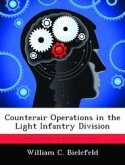Contingency planners have little to assist them in planning for the employment of a light infantry division in peacetime contingency operations. The division was created to provide the capability to respond to a crisis before the situation deteriorated to the point where a much larger force would be required to restore stability. However, many recent articles, studies, and academic papers have focused on issues of employment in NATO and effective mixes of heavy and light forces. There has been little discussion of the operational level considerations for the employment of a light division outside of NATO. This study attempts to identify some of these considerations. It asks the question, "What are the factors that operational level planners should consider in the employment of a light infantry division in a peacetime contingency scenario?" The factors that led to division's creation, along with its unique characteristics, are examined. The range of appropriate scenarios and the implications of the joint command structure are considered as components of the environment. Two historical examples of peacetime contingency operations (American intervention in Lebanon in 1958 and the Dominican Republic in 1965) are also examined. The intent is to identify a historical perspective to compare with current perceptions described in earlier sections. The study concludes by establishing the linkage between strategic means, ways, and ends and the use of the light infantry division, and by summarizing the issues identified in the second, third, and fourth sections.








